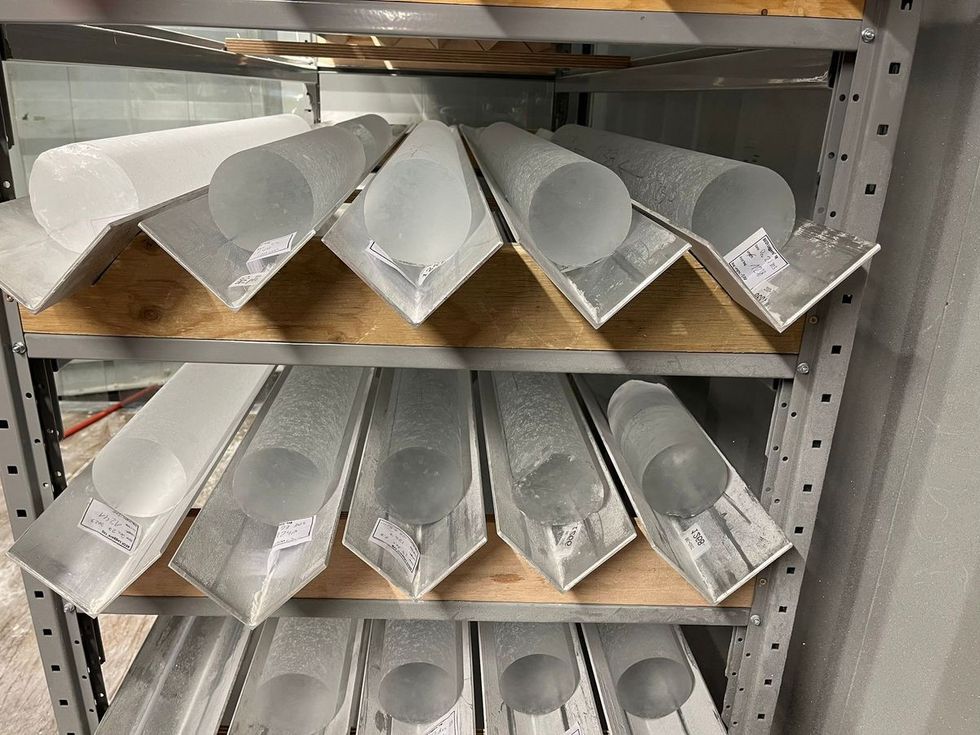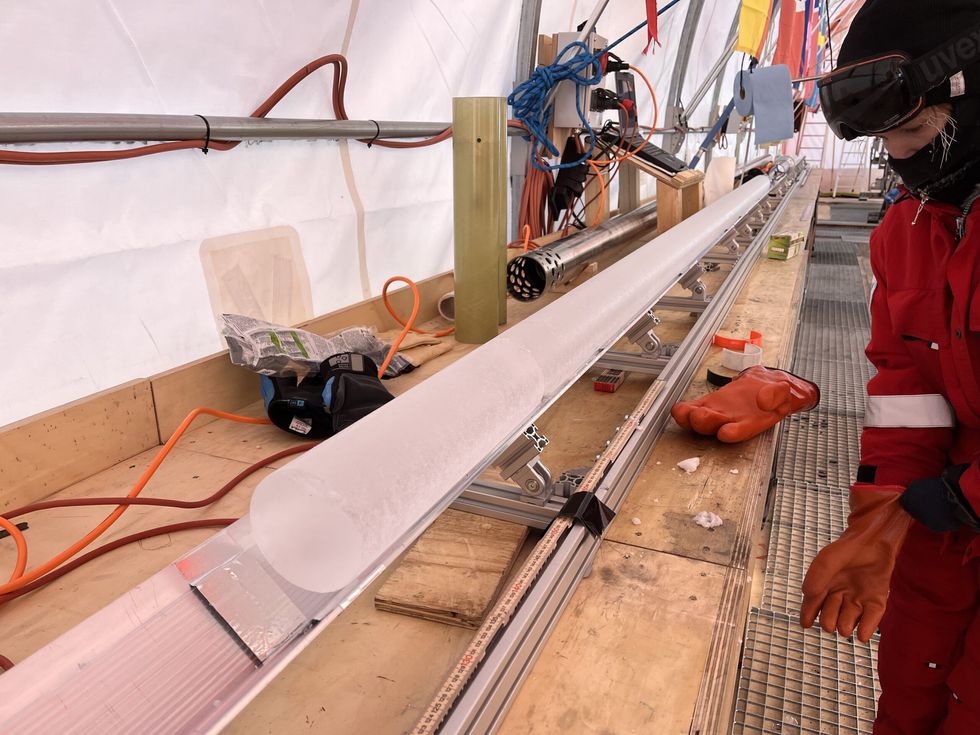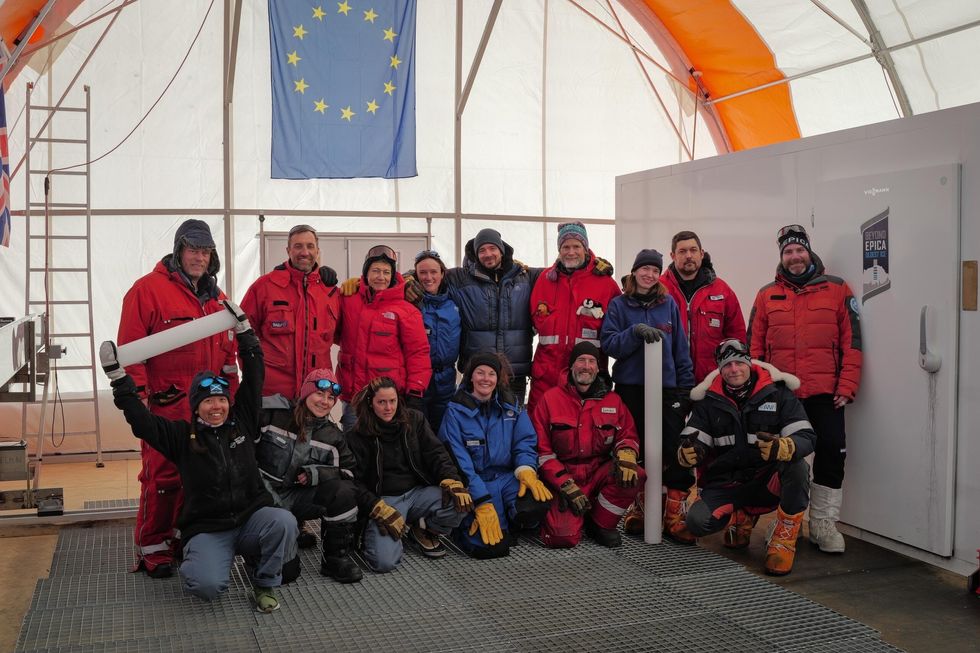Scientists have discovered what is believed to be the world’s oldest ice in Antarctica, dating back approximately 1.2 million years.
Ice cores extracted and studied by a team of researchers could contain ancient air bubbles that provide crucial insights into Earth’s climate history.
The discovery was made by an international team led by the Italian Institute of Polar Sciences, involving scientists from 10 European nations.
Researchers hope the ice will help them understand historic temperatures and greenhouse gas levels, potentially improving future climate change predictions.

Scientists dig out world’s oldest ice in Antarctica
PNRA, IPEV
Working in extreme conditions of -35C, the team successfully extracted a 1.7-mile-long piece of ice from deep within Antarctica.
The extracted ice core is equivalent in length to more than 26 football pitches laid end to end.
Preserved air samples and other particles trapped inside the ice which were formed hundreds of thousands of years ago, could provide vital information about Earth’s past climate conditions.
One of the key mysteries scientists hope to solve relates to a significant climate disruption that occurred around 1 million years ago.
Julien Westhoff, chief scientist in the field, said: “We have a strong indication that the uppermost 2,480 meters contain a climate record that goes back to 1.2 million years in a high-resolution record where up to 13,000 years are compressed into one meter of ice.”
SCIENCE LATEST:

Ice core logging in the field
PNRA, IPEV
During this period, glacial cycles were disrupted, and some researchers believe human ancestors came close to extinction.
The preserved air bubbles within the ice could hold vital clues to understanding this critical period in Earth’s history.
Professor Carlo Barbante from Ca’ Foscari University of Venice described the discovery as “an amazing achievement”.
“You have in your hands a piece of ice that is a million years old,” he said. “Sometimes you see ash layers coming from volcanic eruptions.”

The 2024/25 field season team
PNRA, IPEV
The professor highlighted the remarkable preservation of ancient air within the ice. “You see the tiny bubbles inside, some bubbles of air that our ancestors breathed a million years ago,” he added.
The extracted ice is now being divided into one-metre sections for distribution to various European research institutions.
The British Antarctic Survey in Cambridge is among the facilities set to receive portions of this ancient ice.
Dr Robert Mulvaney, a glaciologist and palaeoclimatologist at British Antarctic Survey who took part in one of the earlier drilling seasons, expressed his anticipation at reaching such a historic moment in climate history research.
He said: “It was exciting to see the ice age as we drilled deeper, and especially when we knew we were drilling ice older than the EPICA record, which ended at 800,000 years ago; this record of 1.2 million-years will give us several 41,000-year glacial cycles to compare with the more recent data from the original EPICA core.”
Scientists are set to conduct detailed analyses to uncover new information about Earth’s climate evolution over the past million years.